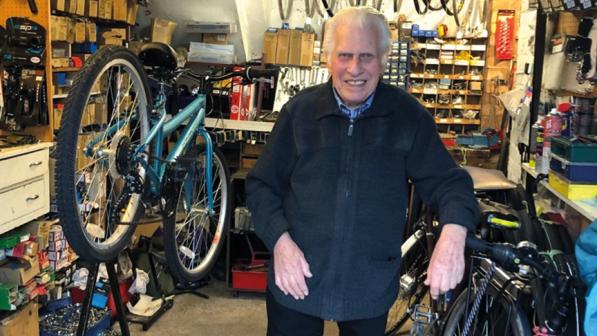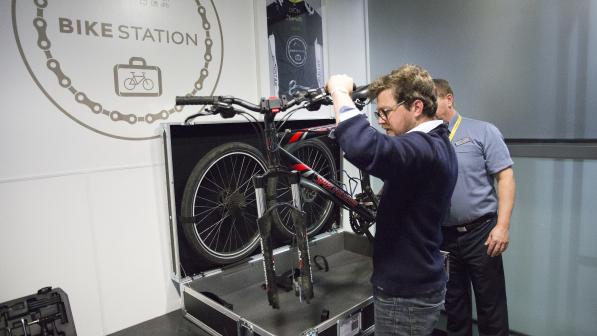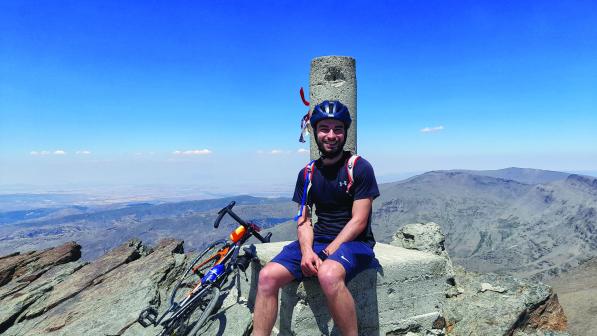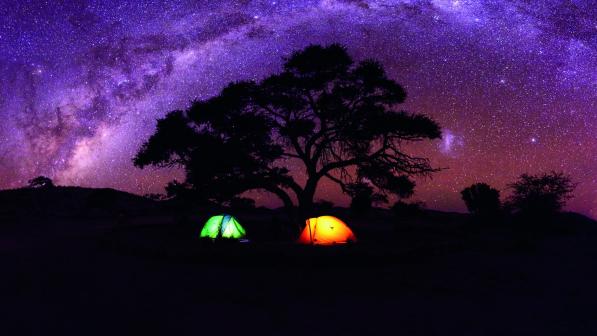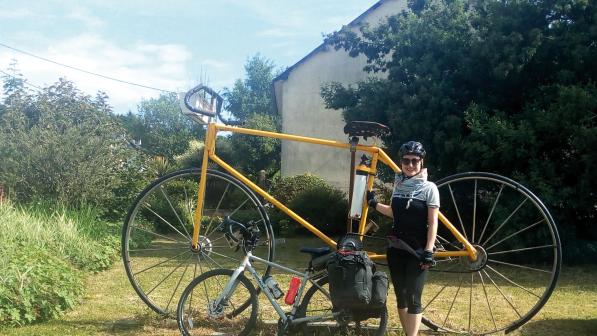Great Rides: Drifting through continental Europe

When I retired, I promised myself I’d take a long tour through Europe. All my holidays have been in Britain or Western Europe for the past 17 years, as I stopped flying when I started working in sustainable transport. With time on my hands, I could dream of going further. By March 2022, two months before my 60th birthday, I was ready.
The idea was to ride through France, meeting up with some old friends and my father, who lives there, and then follow Eurovelo Route 6 to Vienna. From Vienna I would turn south, following Routes 9 and 8 along the Adriatic coast to Greece, before taking the ferry to southern Italy to start the long ride home.
I began planning all this before Brexit, however. The new rules have complicated travel across Europe and, as I would discover, unexpected events can complicate them still further. Due to the 90-day Schengen limit my route was designed to reach Croatia as soon as possible. The sooner I could cross the Croatian border, the more time I could spend in Greece at the end of the trip. Or so I thought.
The weight I was carrying would limit my daily mileage but that was fine; I wanted to spend time enjoying the experience. Some of my cycling friends couldn’t understand why I wanted to carry so much stuff, but washing a single pair of underpants every night for several months is not my idea of fun.

First stop: France
I bought a pair of giant 70-litre Ortlieb panniers for the rear and a 25-litre pair for the front. I was going to take emergency camping gear but the bike was already too heavy, so I took my chances on finding affordable accommodation. For all their faults, Airbnb and booking.com have made that easier. I also used warmshowers.org, a community of cyclists offering accommodation free of charge, through Britain and France, but it became more difficult to find hosts after that and I eventually stopped trying.
I crossed the Channel from Poole to Saint-Malo to ride through familiar territory, although it had been three coronavirus-infected years since my last visit to France; the remaining coronavirus restrictions there were lifted a few days after my arrival. I had almost forgotten what a great country France is to ride through, with its dense network of quiet lanes.
From Rennes, I headed south-east towards the Loire, where I followed Eurovelo 6 for a few days before turning south. This was the famous chateau route at its springtime best. In Saumur I spent a night in a studio flat inside a mediaeval building, where I carried my bike up a spiral staircase that looked like the entrance to a dungeon.
As I left the Loire corridor to follow the Vienne south-east, the population density began to fall. I have passed through many quiet villages in France but the contrast was particularly stark here.
Sylvain, an old friend from Paris, planned to join me in Argenton-sur-Creuse, from where we would ride together for two days. He has helped me out many times over the years – and soon would again.
The day from Argenton to Guéret was tough. The ride from Saint-Malo had been fairly flat, but as the terrain turned hillier the heavens opened. The 80km ride was long enough for me with full panniers; Sylvain had not ridden a bike since the pandemic and found it harder. In the only town on the route, Dun-le-Palestel, everything was closed, including the big supermarket. As we ate peanuts and muesli under the canopy of its petrol station, my body temperature dropped to shivering point.
The following day the weather improved as we followed the River Creuse to Aubusson. The beauty of the valley reminded me why my father chose to retire here, though he sometimes found it too quiet. Like much of rural France, the bars close early and it lacks doctors and dentists, which was becoming a big issue in the presidential election campaign – and a painful one for me, as I was starting to get toothache under a bridge.
There was no chance of seeing a dentist in Aubusson. On my 10th attempt I finally spoke to someone at the dental hospital in Clermont-Ferrand, who gave me an appointment in a few days’ time. They gave me X-rays and other tests but couldn’t find anything seriously wrong, so I continued northeast towards the spa town of Vichy. Then the pain returned. Staying in France for longer treatment could bust the 90-day Schengen limit, so I reluctantly decided I would have to go home. Sylvain said I could leave my bike at his house in Paris. What a great mate he has been over the years.
A couple of days later I took the TGV from Le Creusot in Burgundy to Paris, where I rode from the Gare de Lyon to Sylvain’s home in Villejuif. Only when I returned to the UK and read Cycle magazine did I realise that Eurostar had stopped carrying fully assembled bikes during the pandemic and were only “planning to restart the service in the summer”.

Lost luggage
A month later, in early May, I picked up my bike in Paris and took a train to Colmar, near the German border. As I rode from the station to the first hotel a strange anxiety came over me as I wondered: what else could go wrong?
I crossed the border into Switzerland by the Three Countries Bridge over the Rhine, where France, Germany and Switzerland meet. Switzerland had the best cycle infrastructure I encountered, with clearer segregation and fewer shared pavements. All the paths on the designated routes were asphalted. People in this part of Switzerland speak Swiss German dialects; most can also speak standard German but not everyone. Some people had told me that nearly everyone in Switzerland, Germany and Austria speaks English. That might be true in cities but not in smaller places, where events would test my dodgy German to its limits.
Switzerland was also the most expensive country, so where Eurovelo 6 followed the border east of Basel I always tried to eat on the German side. Eurovelo 6 is mainly quite flat, although I sometimes diverted from it. Over the next 500km I would pass through some magnificent towns and city centres in Sigmaringen, Ulm, Neuburg an der Donau, Ingolstadt, Regensburg and Passau.
By comparison, the first city in Austria, Linz, was disappointing. A vast industrial area known as the Chemical Park stretches along much of its waterfront, but eventually the industrial activities gave way to wooded hillsides with sumptuous churches on the highest points.
I had been riding for four weeks and was feeling quite happy; nothing serious had gone wrong. Then, arriving in the market place in Tulln, I reached into my panniers and found no camera, no phone and no credit cards. I asked several people (none of whom spoke English) if I could call my number. Most refused. One old woman let me dial on her phone but insisted on keeping hold of it in case I tried to steal it. “I’m from Vienna,” she explained.
Eventually, a German man helped me discover through Google Timeline that the phone had been stolen from a shop. This was the start of a four-week nightmare involving exasperated police, sluggish insurance companies, and incompetent banks and mobile phone companies. In the meantime, I bought local sim cards, which only work in one country and cost a fortune to call the UK, post-Brexit. Around the same time, I left my precious water heater in a B&B and the keyboard I used to write my articles somewhere else. I have no idea where.
All of this dampened the enthusiasm I would have felt arriving in Vienna. There are so many beautiful buildings, with such a rich history, that a few days there can feel overwhelming. I spent much of my time just wandering and observing. The Wiener Musikverein, where I watched a piano recital, glistens with gold on every pillar. An usher dressed like a naval officer looked askance at my attire and confiscated my water bottle.
Although it has some good cycle paths, I was glad to get away from Vienna’s traffic and aggressive drivers. The suburbs and industrial sprawl spread a long way south, but as I rode towards the Slovenian border the terrain became hillier, quieter and more wooded.

Out of the Schengen area
Slovenia is a country I would like to see more of but, as I was trying to leave the Schengen Area, I crossed it along the River Mura, where Slovenia is only 40km wide and not particularly impressive. At the Croatian border a guard took my passport, did something with it and handed it back. A few hundred yards later, I stopped to check it: no date stamp. Recalling horror stories of Brits being arrested and fined for this, I headed back to the same official. He spoke a few words of English but clearly understood very little. Fortunately, he understood “Brexit”, which got me the stamp I needed.
Several things were different here, compared to Austria and Germany: for example, a more flexible attitude towards laws. I was surprised to read that Croatia has similar smoking laws to the rest of Europe. No one pays any attention to them. Cycling on (undesignated) pavements is illegal in towns and cities but most cyclists do it and no one seems to object.
There are many cycle routes across Croatia, although it is difficult to relate the GPX routes on the official websites to the haphazard signage on the road. Most of the minor roads are wide with long sight lines, which can encourage high speeds, although it is possible to find quieter, twisty lanes in the hillier or mountainous areas; I would do a lot more climbing here.
I was due to meet my wife in Pula and had time to cross the country slowly. I took several days to ride between the historic capital of Varazdin and the modern one, Zagreb. You can see the Austrian influence on Zagreb’s older buildings, though they have not been so well maintained. At the top of a short funicular I stumbled across Strossmayer Promenade, ‘Zagreb’s Montmartre’, which had artists’ stalls and two amazing guitarists playing to a handful of passers-by.
The road towards the coast climbed to over 800m, through the memorably named Fučkovac, before the Adriatic came into sight, with tourist resorts nestling in the bays between two large oil terminals. Rijeka, Croatia’s third city, was ruled by the Venetians for many years. You can still see the Italian influence on its old buildings and smart pedestrianised centre, which has café terraces on every corner. I spent a week there, as the temperatures rose, swimming from its pebble beaches. I asked my host if this heat was “normal”. Not at all, he said in broken German. The climate was “kaputt”.
From Rijeka, I followed the coast into Istria, on Eurovelo 8 for part of the way, although there wasn’t much evidence of that on the ground. That day I started at 7am, but it was 32 degrees and sweltering by 10.30am.
I met my wife in Pula, a port full of Roman sites, in early July. There is nothing like a long period of travelling alone to remind you whom you love and why. My feelings were entirely uninfluenced by the credit cards, keyboard, water heater and sim card that she brought.

Burning issues
On our last evening, a Saturday, I was washing my bike and noticed a split in the rear wheel rim. All the bike shops were closed until the Monday, so I had to stay two more nights and pay twice for accommodation. Fortunately, I found a friend in Ron of Enduro Bikes, who fixed everything while I had a coffee on the Monday morning.
I had wanted to spend time on the islands but, when I looked again, all the accommodation had gone. So to avoid retracing my route, I took the island ferry all the way to Zadar, further down the coast. It was a magnificent journey, with the wind cooling the effects of the burning sun on the open deck. Zadar is another historic city with Roman remains, but in mid-July there are so many tourists it is difficult to walk, let alone cycle, through its pedestrianised centre.
Eurovelo 8 seems to have two alternatives from Zadar: one goes inland, the other mainly follows the coast road. When I looked online all the available accommodation was on the coast, so it would be very difficult to avoid that coastal road. I started at 6am but the traffic, including heavy lorries, was already busy by seven, and it was getting hotter.
A Greek friend told me it was 43°C in Athens. As I planned my route, I realised that conditions would be like this for some time. I had been considering shortening the ride for various reasons but this tipped the balance. I would end my journey on the Split-to-Ancona ferry and make another trip to Greece at a different time of year.
That was the end of my continental ride, but not the end of the story. When I started to plan my route home (without flying), I discovered that neither SNCF nor Trenitalia were offering cycle spaces between Milan and Paris. I found a way across the border via Ventimiglia and Nice, but the only option from there to Paris was the overnight sleeper in two days’ time.
Eurostar’s website said the company had delayed its plans to restart its cycle service due to “security and customs issues” (Brexit again), so back to Cherbourg and Poole it would have to be. There were two silver linings to all this. If I had stuck to my original plans and discovered these problems in Greece, I would have fallen foul of the 90-day Schengen limit and could have been detained at Cherbourg. Now, at least, I could ride the last stretch home.
Taking a fully laden bike on and off trains and ferries is always stressful but the night train was well-organised. There were four cycling spaces in our carriage, and they put the cyclists together in the cabin nearest to the bikes. I didn’t get much sleep but at least we could swap stories about our travels. A Dutch couple told me that Flixbus carries a few bikes on some of its routes, which might be useful for the future.
I arrived home in early August. I had travelled for four months, including the English sections, cycled on just over half the days, covered 2,200 miles, and spent just over £10,000. For years I have dreamed: when I retire, I will cycle across Europe and write about it. Things didn’t go to plan, they rarely do, but I am still basking in quiet satisfaction that I did it.

